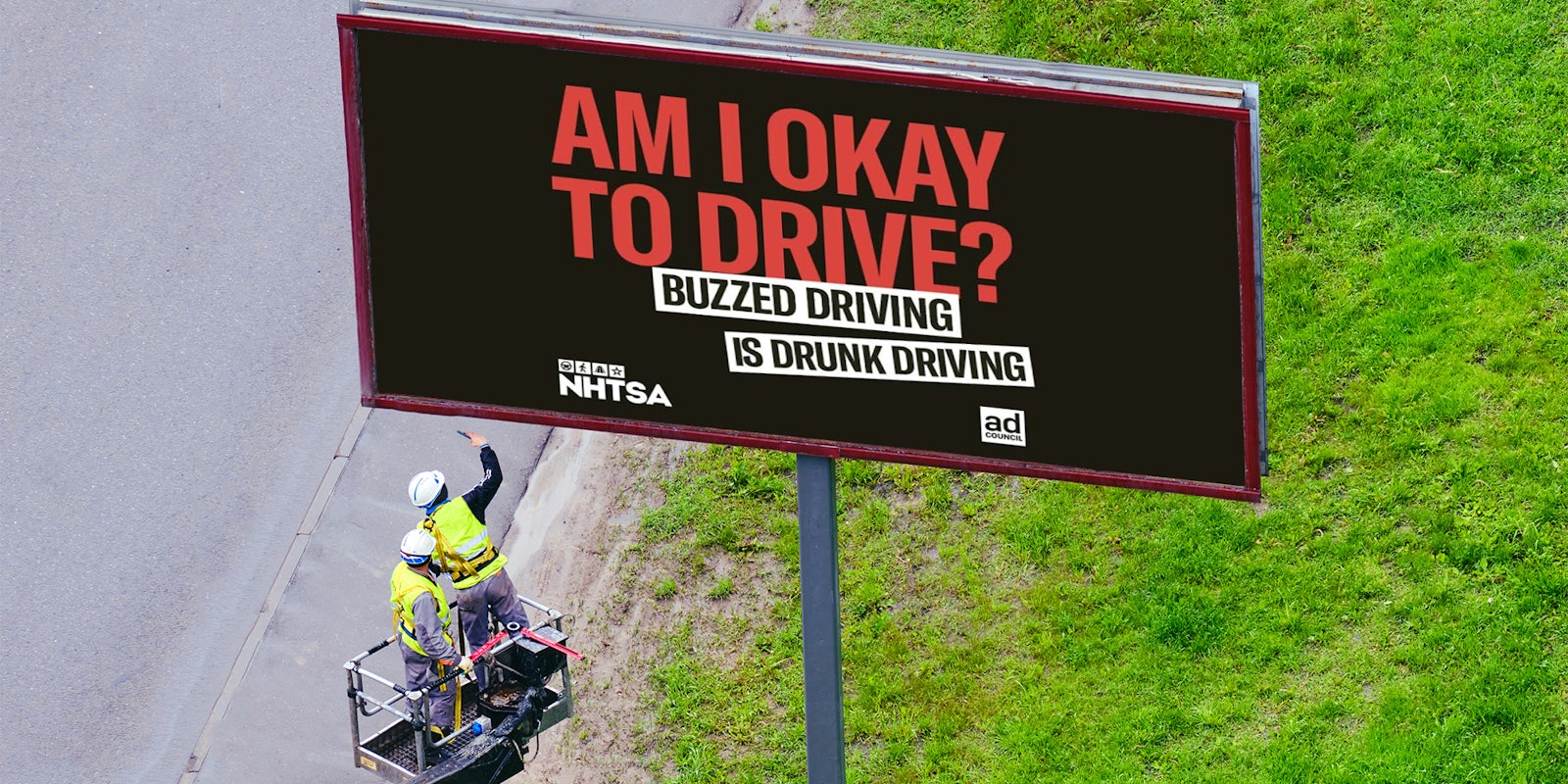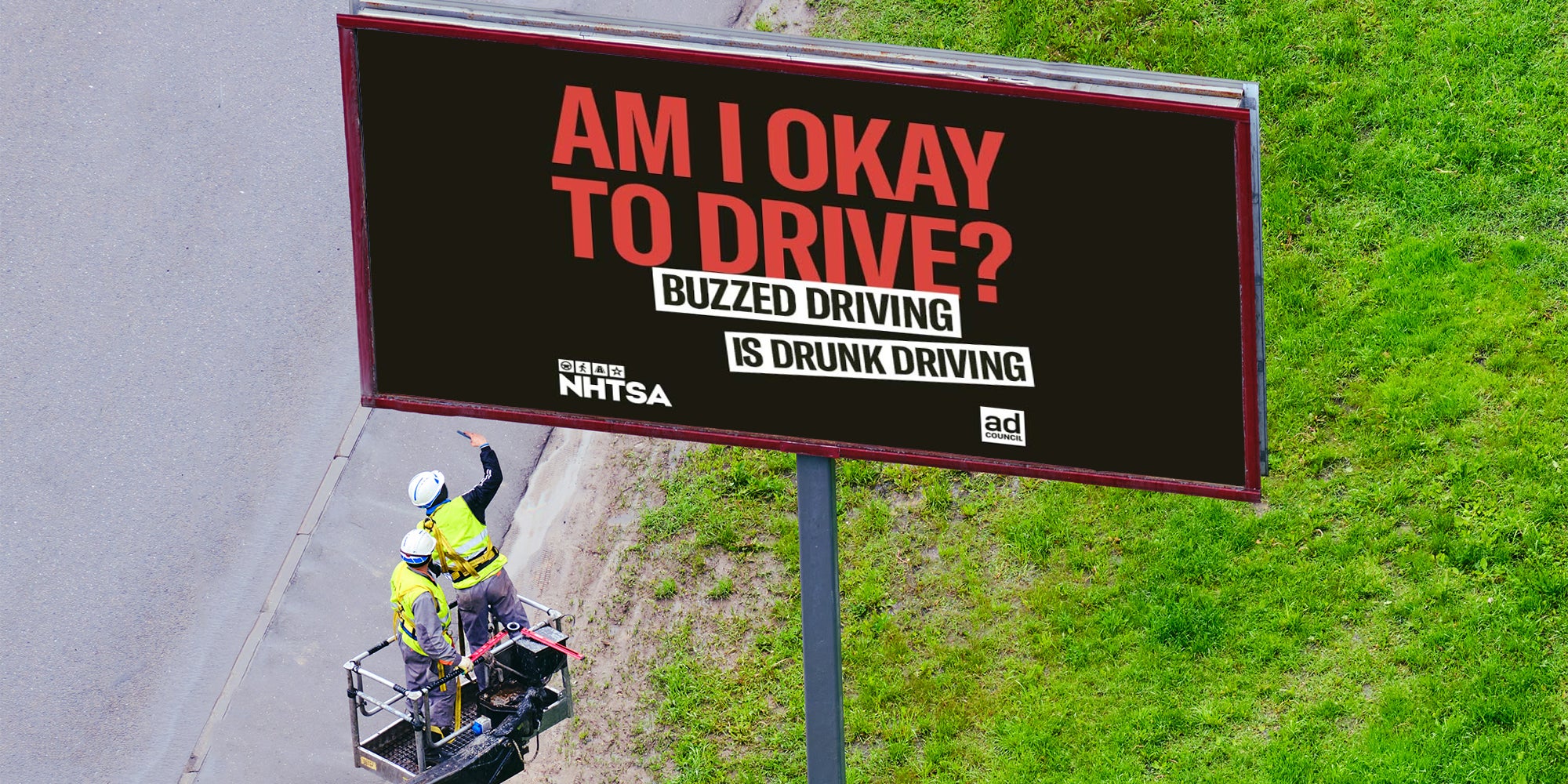Influencers are paid to convince their followers to buy new products, try new restaurants, and implement new skincare routines.
Now, they’re getting money from the government to discourage drunk driving. Taxpayer funds have pivoted to TikTok in the fight to keep intoxicated drivers off the road.
This year, the Texas Department of Transportation spent over $30,000 on social media influencers for their campaign discouraging drunk driving, according to records obtained by the Daily Dot.
Its campaign, which used the hashtags #endthestreaktx and #drivesobernoregrets, mainly hired food and drink influencers and popular TikTokers who had relationships with victims of drunk driving.
The Daily Dot obtained public records for four states showing how they are spending money relating to drunk driving. The flow of money shows a pattern of heavier spending around the holiday seasons and in more populous states. Taxpayer funds have also gone towards paying consultants, TV stations, and search engines to promote content against drunk driving.
Anti-drunk driving organizations like Mothers Against Drunk Driving have said that “paid media campaigns combined with high visibility enforcement make a huge impact.” However, research has struggled to prove the actual efficacy of campaigns.
States’ annual spending on drunk driving
Drunk driving still plagues the U.S. 35 years after it was made illegal.
According to the Department of Transportation website, 10,192 people were killed by drunk driving in 2019 nationwide. That equates to over 70 incidents per day. According to Mothers Against Drunk Driving National President Tess Rowland, there is an injury or a death every 79 seconds because of drunk driving.
Rowland also emphasized the importance of stopping drunk driving.
“Drunk driving is the lead killer on our roadways at this time,” she said. “We, as an organization, fully believe that someone that is of the age of 21, or over, can enjoy a night out with alcohol—just don’t drive.”
To combat it, spending on DUI campaigns across states ranges from thousands to millions of dollars.
In 2023, Arizona’s Department of Transportation spent a mere $40,500 on drunk driving-related advertisements. Meanwhile, the Colorado Department of Transportation had a budget of $800,000 for public service advertisements on drunk driving, which is a $25,000 increase on the budget from 2022. The Texas Department of Transportation has spent $1,665,892 so far this year.
Holiday-focused drunk driving campaigns
In some states, advertising spending was mainly geared towards holidays. For example, in Florida and New Mexico, the state’s departments of transportation tried to influence people away from holiday drunk driving through radio, TV, and social media advertising.
In New Mexico, the government spent $110,000 on campaigns in 2020 surrounding St. Patrick’s Day, running advertisements from Match 16 to 22. In its 30-second advertisement, a chef, a grandmother, and a mechanic all introduce themselves, defined by what they do. But the last character in the ad is branded as a drunk driver.
“No one wants a drunk driving arrest to define who they are but a DWI will stay with you forever,” the radio advertisement said.
The New Mexico campaign, which included a 30-second radio ad spread across 122 different stations and focused on the long-term impacts of getting a DUI, was targeted at adults aged between 18 and 50.
Texas also ran advertising aimed at preventing drunk driving on St. Patrick’s Day, spending $309,000 on March 2023 campaigns, including on billboards, brand ambassadors, TV, and radio advertisements.
Some of the advertisements were specifically focused on college students on spring break, with $23,000 being spent on four events, two of which were at the University of Texas campuses.
The Florida Department of Transportation also spent $625,000 this year on campaigns surrounding St. Patrick’s Day. Their advertisements, which ran from March 6-17, feature celebrants drinking in the front seat of a car. Suddenly, a jump scared puts a cop in the backseat.
“Don’t let your luck run out this St. Patrick’s Day,” the Florida advertisement said. “Drive sober or get pulled over.”
The campaign claimed to be targeted at men between 18 and 34 years old and ran concurrently with a national drink-driving awareness campaign.
Florida also ran advertisements surrounding Christmas, spending $750,000 on a campaign that ran between Dec. 14, 2020, and Jan. 1, 2023. Their Winter campaign featured neon signs advertising the consequences of drunk driving, including having to sell your car, losing your girlfriend, and moving in with your mother.
“You could kiss $10,000 goodbye,” the campaign ends by saying.
Media strategy for drunk driving campaigns
Rowland, national president of MADD, said in an interview with the Daily Dot that public media campaigns are an important part of reducing drunk driving, particularly among younger drivers. She added that the efficacy of public service advertising campaigns has already been shown through increased seatbelt usage among younger drivers.
“We believe that paid media campaigns are active and helping to, of course, remind people about the dangers of impaired driving,” she said. “Paid media as well as high visibility enforcement, and the investment in education campaigns really helped to create this societal norm that is wearing a seatbelt in a car.”
Public spending, Rowland argued, was important in changing behavioral habits while allowing people to enjoy themselves, particularly since she feels drunk driving is a preventable crime.
Rowland also said that she feels it’s important to put victims first in campaigns discouraging drunk driving, adding that her experience as a victim of drunk driving is what first encouraged her to become involved in drunk driving campaigns.
“The power is in our victim voices, so most of our successful PSA campaigns involve a victim fiercely sharing their story,” she said. “I was hit head-on by a wrong-way drunk driver, and it changed the entire course of my life forever.”
The impact that drunk driving has on victims is the focus of one of the TikTokers employed by the Texas Department of Transportation. TikTok influencer Savannah Marable, who has 2.3 million followers, posted a video on her platform with her father-in-law, a victim of drunk driving, who is in a wheelchair.
“I was out on a Sunday afternoon riding my motorcycle, a drunk driver pulled out in front of me and I had less than a second to react,” Marable’s dad said in the video. “I wound up stuck underneath a truck for 45 minutes.”
The father-in-law added in the video, which had 71,000 likes, that even after six months of rehab, he is no longer able to do things he used to enjoy.
“Look at me now: I can’t ride a bike, I can’t kayak, I can’t go camping—all these things I used to love to do,” he said in the video.
Other Texas TikToks were less victim-focused.
In one sponsored video on TikTok, Amanda Spencer (@sanantoniofoodie), who recommends restaurants on her account and has 510,000 followers, toured her favorite bars while messages onscreen encouraged followers to find a safe way home.
“Call a friend or family member to come get you,” the onscreen text said while showing footage of the influencer drinking in the background in the video, which was viewed over 71,000 times.
In another TikTok video made in partnership with Texas DOT, travel influencer Alessandra Mayr, who has 135,000 followers, shared her top four tips to avoid drunk driving. She said in the video, which got over 286,000 views, that drinkers should pre-plan their journeys home, take turns being the designated driver with friends, and ask for help from bar staff or family members.
“As a bartender myself, it’s pretty common for people to ask us to find them a sober ride home after drinking,” she said in the video. “There’s seriously no shame in it at all.”
National funding for drunk driving campaigns
Although some of the funding for drunk driving campaigns comes from state budgets, the National Highway Transport Safety Administration (NHSTA) also provides grants of federal money to help run awareness campaigns. From October 2022 to September 2023, Florida received nearly $9 million for impaired driving countermeasures, while Arizona and New Mexico received $3 million and $1.6 million respectively.
Overall, the National Highways Transport Safety Administration has given out almost $190 million of grants for impaired driving countermeasures across all 50 states for the 2023 financial year. NHTSA grants can be used by states for advertising campaigns, enforcement options, and in-vehicle ignition devices.
However, not everyone supports public spending on drunk driving campaigns. According to research from Nidhi Agrawal, an associate professor of marketing at the Kellogg School of Management at Northwestern University, in some cases, advertisements trying to use shame and guilt to stop driving could make people more likely to engage in the practice.
“Defensiveness is a distorted perception of a viewer’s susceptibility to alcohol’s consequences, such as, ‘Drinking affects other people, but not me,’” she said in the report. “It might even lead to binge drinking, if a viewer becomes defensive.”
But the actual efficacy of the campaigns is hard to gauge, as all four departments of transportation did not respond to requests from the Daily Dot for comment.






